 WeaveResearch Unit
WeaveResearch Unit
 WeaveResearch Unit
WeaveResearch Unit |
Weavers of the World |
| Home | Ringing opportunities |
The main groups of weavers include: buffalo weavers, sparrow weavers, social weavers, true (Ploceus) weavers, malimbes, queleas, fodies, bishops and widows.
Some examples of weavers:
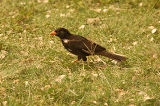
Red-billed Buffalo Weaver |
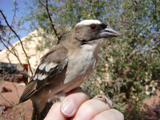
White-browed Sparrow Weaver |

Village Weaver |
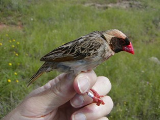
Red-billed Quelea |

Southern Red Bishop |
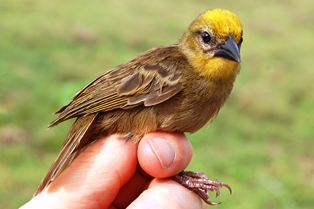
Seychelles Fody |
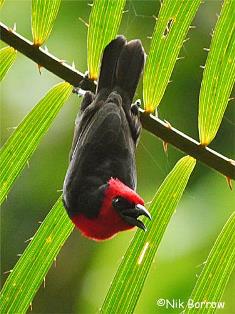
Crested Malimbe |

Some weavers have been introduced to other countries, e.g. Australia, Spain and the West Indies off the North American coast.
The habitat on weavers relates to their diet. Weavers in forests and woodlands feed on insects and spiders to a great extent, but may still eat seeds. Savanna and grassland weavers feed largely on seeds, especially grass seeds which are available in this habitat.
Main habitats of weavers:

Forest eg Dark-backed Weaver | 
Woodland Spectacled Weaver feeding on spiders & insects | 
Savanna eg Village Weaver | 
Grassland Southern Red Bishop flock feeding on grass seeds |
Count how many weaver species on this page match with the main colours black, yellow, red and brown.
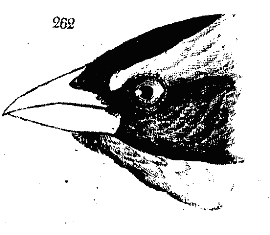
|
Many weavers are seed-eaters. Weavers do not have much variation in bill size and shape compared to some other groups of birds, like sunbirds or wading birds. There is some variation in how long and how thick bills are which determines the size of the seeds that the weaver prefers to eat. Some weavers eat more insects than seeds and will usually have more slender bills. Weavers feed their chicks with insects because the chicks need the protein in insects to help them grow. The Thick-billed Weaver has the thickest bill of all weavers and uses it to crack the seeds of forest fruits.
Left: White-browed Sparrow Weaver, showing general weaver bill shape |
Bills of some southern African adult male weavers:

Spectacled Weaver slender bill insect eater |

Village Weaver long thick bill generalist feeder |

Red-billed Quelea short thick bill seed eater |

Southern Red Bishop short thick bill seed eater |
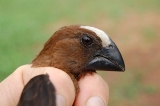
Thick-billed Weaver very thick bill nut cracker |
Some weaver nests:
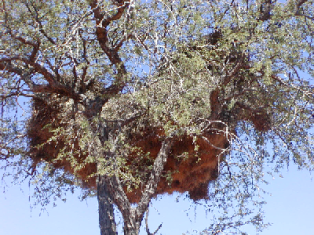
Sociable Weaver communal nest | 
Spectacled Weaver single nest | 
Village Weaver colony | 
Yellow-crowned Bishop hidden in grass |
If you would know of weavers breeding near you and you would like to count the weaver nests, you can take part in a project. See more details under PHOtos of Weaver Nests (PHOWN)
|
Look in your local library for the following books:
Roberts birds of South Africa. (Trustees of the South African Bird Book Fund) - various editions; descriptions of all southern African birds, including all the weavers of southern Africa Steyn P. 1996. Nesting Birds. The breeding habits of southern African birds. (Fernwood Press) - fascinating reading about nests and breeding of southern African birds, including a section on southern African weavers Nearly any other book on southern African birds will have some weaver pictures and text |
|
Look at the following web sites: Browse these web pages for more information - nearly every week more information and photos are uploaded! Read up-to-date information about every weaver species here. |
Would you like a weaver nest to study?
If you have weaver nests near you, you may take a nest under the following conditions:
1. the nest is on the ground because it was broken off by the weavers or by weather
2. the weavers are not breeding, i.e. in winter, but see also next point
3. the nest is a non-breeding nest, i.e. no lining in the chamber. Breeding nests may be used by other birds or animals to roost or breed in, and therefore should not be taken
4. nests may not be taken if you are in a nature reserve (even if it is on the ground)
5. you need permission from the land-owner
You can order a weaver nest for R50 inclusive (additional postage outside South Africa) by emailing Dieter.Oschadleus [at] uct.ac.za; where the nest you receive complies with the above criteria
Has this web been helpful? Email Dieter.Oschadleus [at] uct.ac.za with your comments
